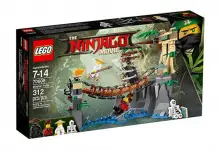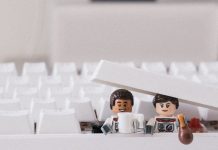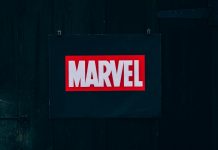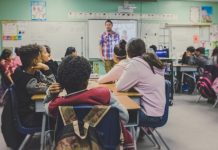
Why Building Toys?
Toys are the necessary instruments upon which children are able to learn very important skills that they will use later in life. Child development psychologists always have an arsenal of developmental age-appropriate toys to help them understand the rate of developmental maturity of a particular child.
They know that by observing how children use and interact with these toys, child developmental psychologists can have a fair idea of how well the child is progressing physically, mentally, socially, and emotionally. Any observed deviations can then be properly addressed to help both the child and his or her parents grow and develop accordingly.
A Primer on Building Toys
Kids need toys that can help them develop their fine motor skills, sharpen their problem-solving abilities, learn the language and numerical skills, facilitate creativity and imagination, and improve their hand-eye and body-limb coordination. One of the most functional toys that can address all of these needs and a whole lot more is the building toy.
Building toys can be simple or very elaborate. They can be made of blocks of wood or plastic cubes with letters, numbers, shapes, and colors. Or, they can be as elaborate as the real-life objects that they represent.
The key to playing building toys is their age-appropriateness. Remember that young infants will normally put everything in their mouths so it is important to provide building toys that are not only free from chemicals but also don’t contain small parts that might choke the young child if accidentally swallowed. You also have to consider the fine motor skills of the kid playing the building toy as a grasping hold will prove difficult to put the different components together. For this purpose, you will need a building toy that is composed of pieces that can be held with an open hand. If your kid has already mastered his or her pincer grasp, then you can begin letting him or her play with building toys with smaller components. These are just some examples of how you need to consider developmental age-appropriateness of building toys.
Building toys are one of the earliest forms of toys
However, they were mostly produced for personal consumption and not for commercial purposes. All of these changed in the early 19th century when child psychologists and educators began recognizing that wooden alphabet blocks can help young children learn how to read, appreciate simple geometric principles, and understand simple physics. Towards the 20th century, building toys became more elaborate culminating with the production and marketing of Tinker Toys, Lincoln Logs, and Erector sets. By the end of the Second World War, LEGO bricks have become an icon in building toys.
 The Advantages Of Building Toys for Your Children
The Advantages Of Building Toys for Your Children
Now that you have an idea of what building toys are and how they developed as one of the most educationally important instruments for child development, let us now look at the big benefits of building toys for kids.
1. Helps Develop Their Motor Skills
One of the most obvious benefits of building toys is the development of the motor skills of kids, particularly their fine motor skills. This requires excellent coordination of the different muscles of the thumb and forefinger to grasp a certain building piece in the correct position. This can help kids master dexterity which they can use later on in life. For example, surgeons require steady hands to make very precise incisions on body organs without injuring surrounding tissues. This can be established by playing toys that promote the development of fine motor skills.
2. Encourages Learning of Cause and Effect Relationships
There are a lot of things that can go wrong in building toys. Not using the correct building piece can result in a very unsteady structure. If the whole structure crumbles, then kids will be able to find out that it is because of the incorrectly placed piece. It is also possible that children learn cause and effect relationships in the form of expectations. They know that by doing something, it will result in something else. They know that if they put one brick on top of the other they will be increasing the height of the structure. This can become a very important foundation for logical reasoning which members of the legal profession use. This is, therefore, a very good exercise to develop children’s logic and critical thinking.
3. Allows the Understanding and Creation of Patterns
Building sets require the establishment of a pattern. Many building toys come with instructional pamphlets on how to build a particular item or object. Children will be stimulated to recognize repetitions or patterns in the building toy. This can help them become more organized and systematic in their ways of doing things. They can make excellent investigators or even psychologists who look for patterns in criminal activity or in human behavior, respectively. As many experts put it, spontaneous individuals are a rarity. Everything has a pattern. Kids can learn to recognize patterns with building toys.
 4. Encourages Testing and Experimentation
4. Encourages Testing and Experimentation
While building toys may come with their recommended configuration, kids can be stimulated to create their very own product of a toy. They can try to test whether a particular building configuration will look better than the original or whether the addition of another element can bring added stability to the whole structure. This helps them formulate their own hypotheses about what might happen if they will change some parameters in the building toy. They can then experiment whether such hypotheses will hold water or not. And, you’re right; they can make good researchers and scientists when they grow older.
5. Fosters Creativity
Many building toys don’t come with manuals; just countless bricks and other elements. In such building toys, creativity and imagination are the names of the game. This can be a great exercise for stimulating the innate creative potential of children. They can become great artists, inventors, or innovators when they grow up. They will see the potential in almost every other thing.
6. Helps in Understanding the Design Process
Children playing with building toys will learn that it takes a certain form of a highly organized system to build something. They will learn that everything has to start with a good foundation so that all of the individual parts will be anchored securely to this foundation. They will gain a better understanding of the whole design process from conceptualization to execution. This will prove beneficial when they grow up as it lays the foundation for becoming architects, designers, and creators.
7. Introduces them to the Real World of Working with Different Materials
In the real world, building something requires different materials. Many things are not produced from single materials. They slowly learn to appreciate this as they explore the different components and materials of their respective building toys. When they grow up, they can excel in the physical and chemical sciences. They can also become excellent builders or contractors.
8. Learns to Appreciate Object Impermanence
There is no such thing as permanent in this world. While young children have object permanence, older children slowly understand the nature of things in this world – that nothing lasts forever. They know that anything they build can also be broken down into pieces. This sense of object impermanence can help them better understand the many baffling questions about life which can make them good philosophers or sociologists.
 9. Teaches them about Cooperation and Social Interaction
9. Teaches them about Cooperation and Social Interaction
When children play with their fellow children, building toys can be an excellent tool in helping them gain a better understanding of the need for cooperation especially in the accomplishment of more complex building tasks. Additionally, kids can learn how to communicate with one another to achieve a common goal. They begin to appreciate the value of social interaction in advancing their own goals. When they grow up, they can be excellent politicians, lobbyists, or even social scientists as they have already mastered the art of cooperation and social interaction right from childhood by simply playing building toys.
10. Helps Introduce Concepts and Principles of Engineering
Building toys require an understanding of mathematical concepts, something that is very important in the field of engineering. Kids playing with building toys know that they need the correct number of building blocks to complete a structure. They also learn how to make some changes in the design to help improve the stability or even the aesthetics of the finished toy configuration. They understand the importance of power and machine systems as well as fluid dynamics. They know that without batteries or a power supply, it will be quite difficult to operate the different mechanical parts of their building toy. These are just some of the engineering principles and concepts that kids can learn when they play building toys.
These are just 10 of the many benefits of building toys for kids. What is important to understand is that building toys are one of the most developmentally-useful toys you can provide your kids. The benefits they bring can help kids become the successful person they will be someday.











